I recently spent a week travelling across Central Java and Yogyakarta, a part of Indonesia that is often overshadowed by its more popular beach destinations – I’m looking at you Bali! Prior to travelling here I knew very little of what this area had to offer. The only place on my radar was Borobudur, because it’s been on my bucket list for years, but aside from that I wouldn’t have been able to name any other landmarks or top attractions. It wasn’t until I started reading blogs and browsing online guides that I learned there were also volcanoes, unique art forms, and local specialties waiting to be sampled.
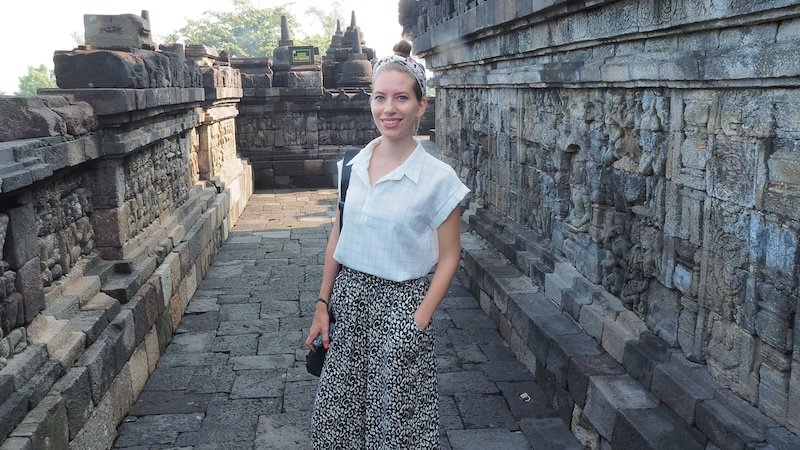
In many ways, this trip was off-the-beaten path. While I encountered many Indonesian tourists exploring the beauty of their own country, once I left Yogyakarta and ventured into Central Java, I came across very few foreigners. I counted a grand total of 7 during my 2 days in Solo/Surakarta, and then only 1 when I went up to Semarang – he seemed just as startled to see me as I was to see him.
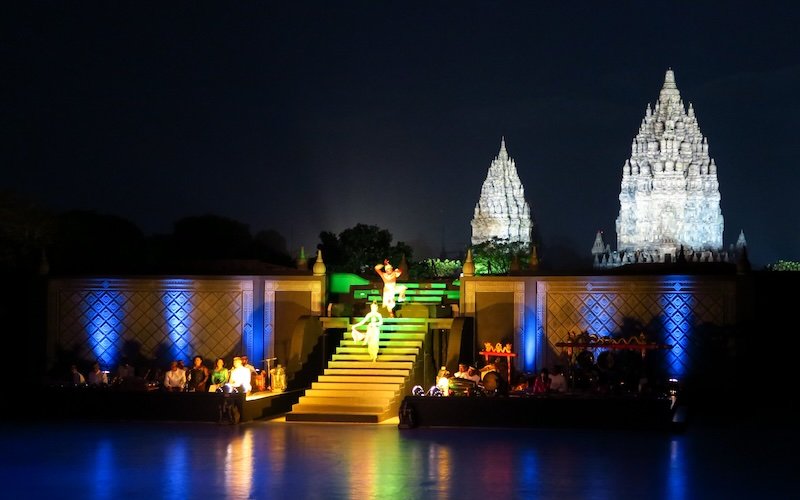
Today I thought I would share some of the highlights from that week-long trip, and hopefully inspire you to visit a part of Indonesia that you may not have previously considered.
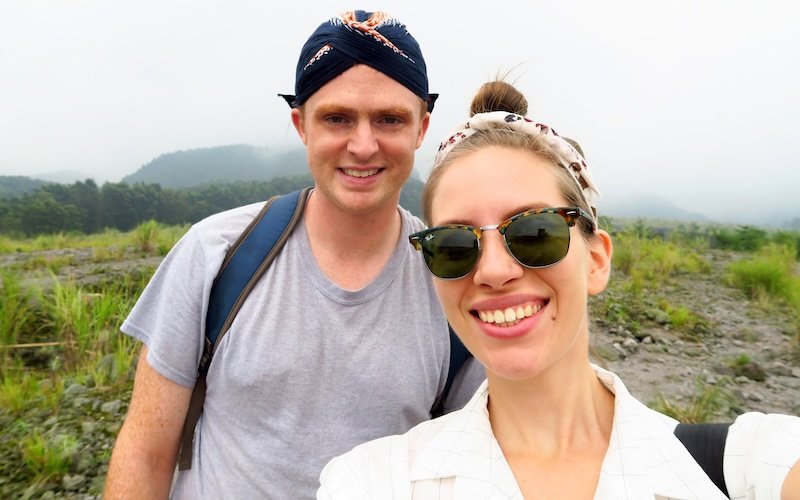
What to Do, See, Eat, Drink & Experience in Yogyakarta & Central Java, Indonesia
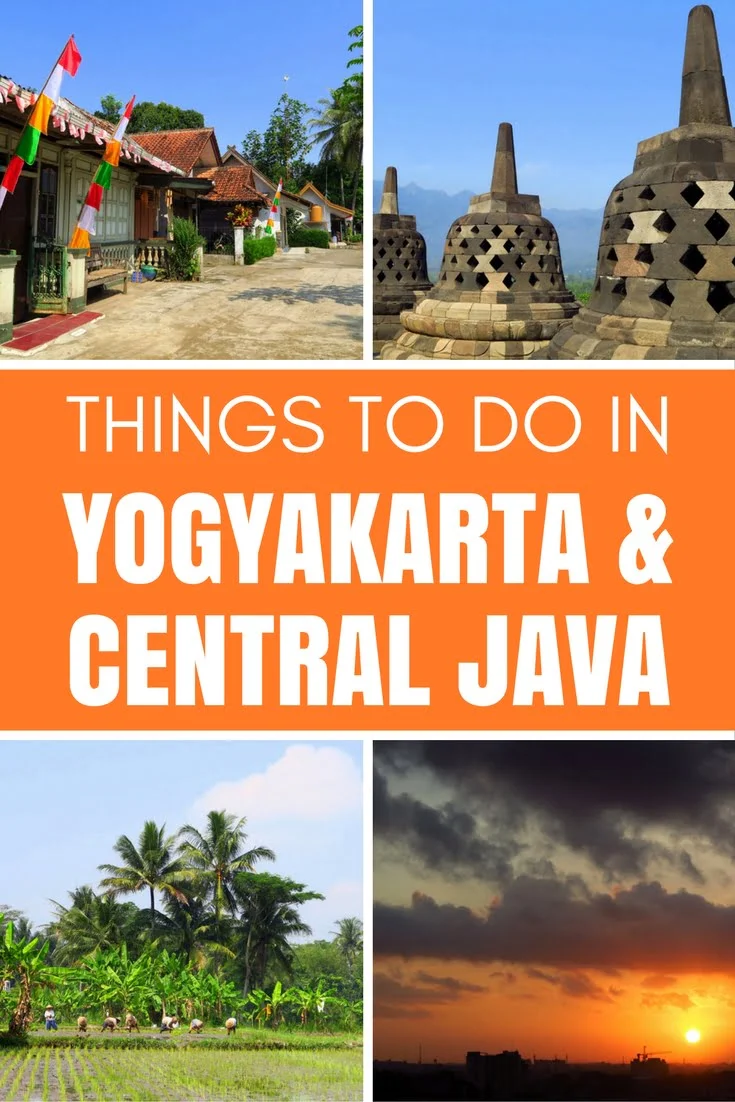
Yogyakarta (3 Days)
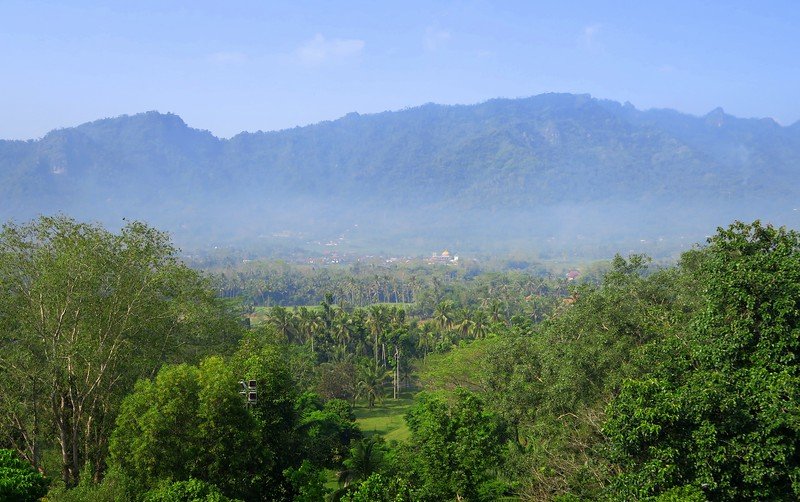
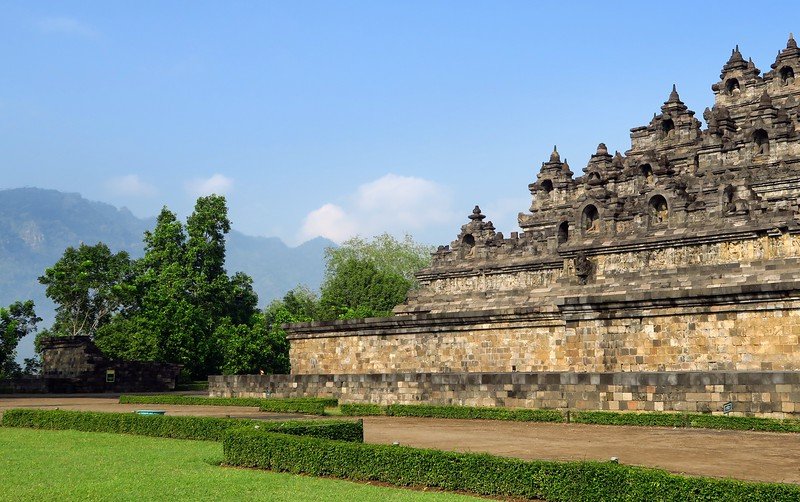
Climb to the top of the largest Buddhist temple
Technically, this place is in Central Java, but if you’re coming all the way to Yogyakarta, you’re going to want to make the day trip to Borobudur to see the largest Buddhist temple in the world. It’s about an hour’s drive north of the city, and you can easily arrange for a driver to take you out there either through a tour agency or through your hotel.
Like with Angkor Wat in Cambodia, many travellers like to get up early to go watch the sunrise. Just make sure you check the forecast in advance to ensure you’ll have clearly skies. We chose to visit later in the morning because the forecast was calling for overcast skies, but thankfully that cleared by the time we got there.
The temple itself consists of 9 platforms: the lower 6 are square and the top 3 are round. At the top, the central dome is surrounded by 72 Buddha statues each seated in a stupa, and across the temple you’ll find a whopping 2,672 relief panels. Imagine the amount of work it took to carve all that!
Admission to Borobudur is $20 USD just for Borobudur, but I would pay $32 for the Borobudur-Prambanan package, which grants you access to another temple east of Yogyakarta.
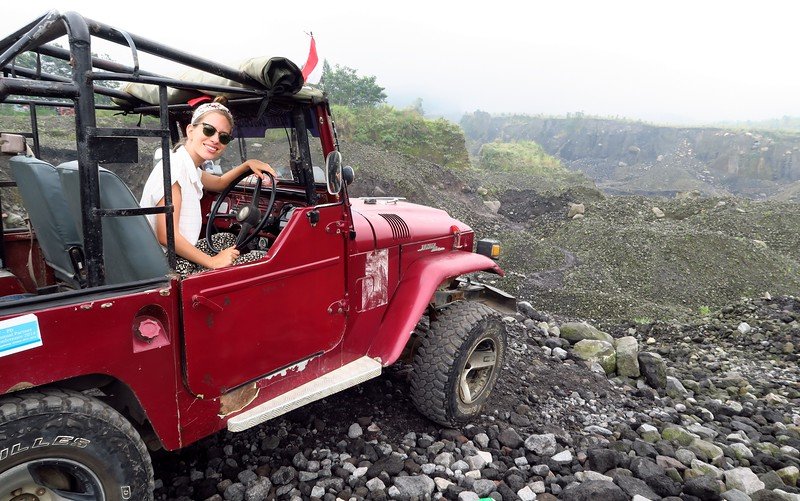
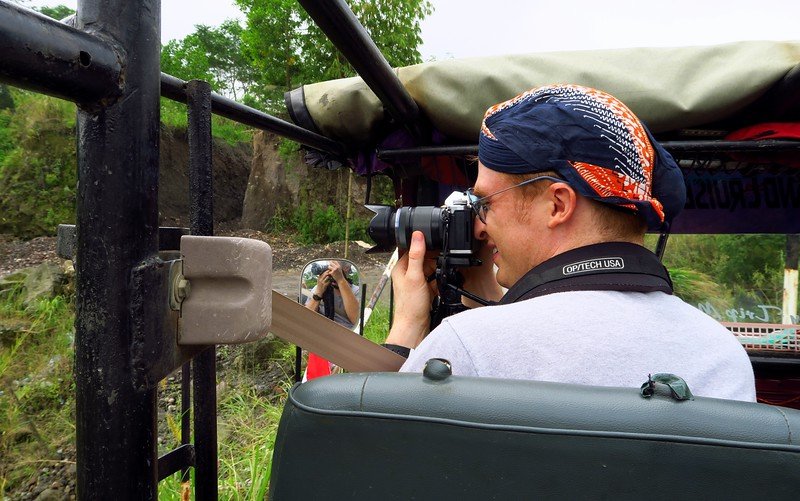
Go on a jeep adventure on Mount Merapi
Mount Merapi, also known as Fire Mountain, is perhaps the most famed volcano in the region as it happens to be the most active.
Though we did contemplate hiking Mount Merapi (like we did with Mount Batur in Bali), we ultimately decided that a jeep ride would be best. We were a little bit short on time, plus the drive back from Borobudur would bring us really close to the volcano, so why not swing by since we were already in the vicinity?
Our driver took us as far up the mountain as we could go, and then he dropped us off at a tour operator where we got a jeep and a driver to take us the rest of the way. The tour cost the equivalent of $25 and the loop took just under two hours (it all depends on how much time you spend taking pictures).
Along the way, we visited Museum Sisa Hartaku, which was established in a home destroyed by the volcanic eruption of 2010. We also went past communities that were abandoned after the eruption, stopped at a giant rock known as ‘Alien Head’ which was launched out the volcano, and visited a former bunker that unfortunately was not able to provide adequate shelter during the last blast.
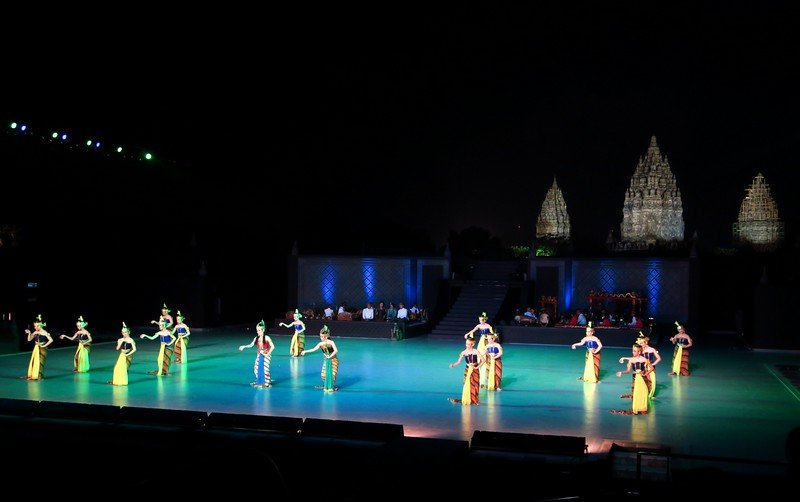
Visit Prambanan Temple and watch the Ramayana Ballet
Prambanan Temple is located in the outskirts of Yogyakarta in the east end of the city right on the boundary with Central Java. It is a is a 9th-century Hindu temple dedicated to the Trimurti, which is the trinity of Brahma (Creator), Vishnu (Preserver), and Shiva (Destroyer).
I would say the best time of day to visit is in the early morning if you want the sun lighting up the temples, or in the late afternoon if you want to catch the sunset.
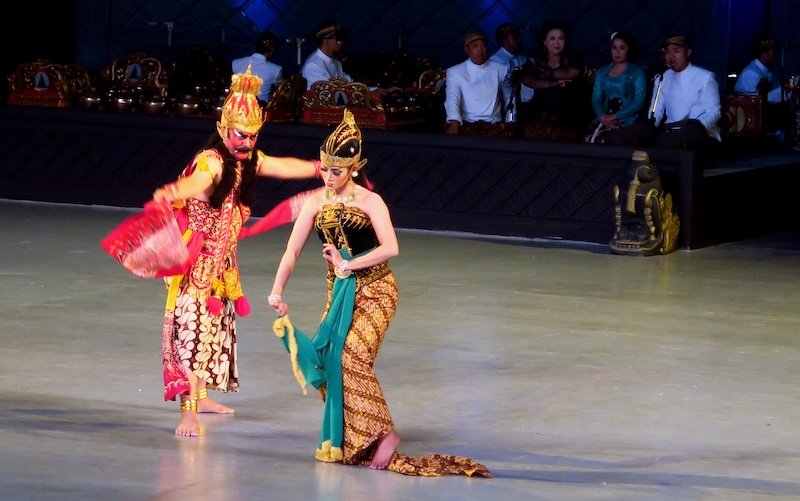
Another activity I would recommend is watching the Ramayana Ballet which takes place in the evenings just behind the temple. This is a Javanese dance interpretation of an Indian epic poem. Some evenings they perform the full Ramayana while other evenings focus on highlights of the Ramayana or showcasing Java’s music and dance heritage, so make sure you check the schedule and plan accordingly.
We decided to watch the full Ramayana Ballet, which was a 2-hour performance with a very brief intermission. I personally found the story a bit hard to follow (though they did have slides every so often that explained what each scene was about), that being said, it was still fascinating to see the colours and the movements, and things really heated up towards the end when they lit part of the stage of fire (all part of the performance, of course).
If you’re interested in cultural dances, you can get more information about the Ramayana Ballet here. And if you don’t want to go all the way out to Prambanan at night, they do stage similar performances in Yogyakarta.
Solo / Surakarta (2 Days)
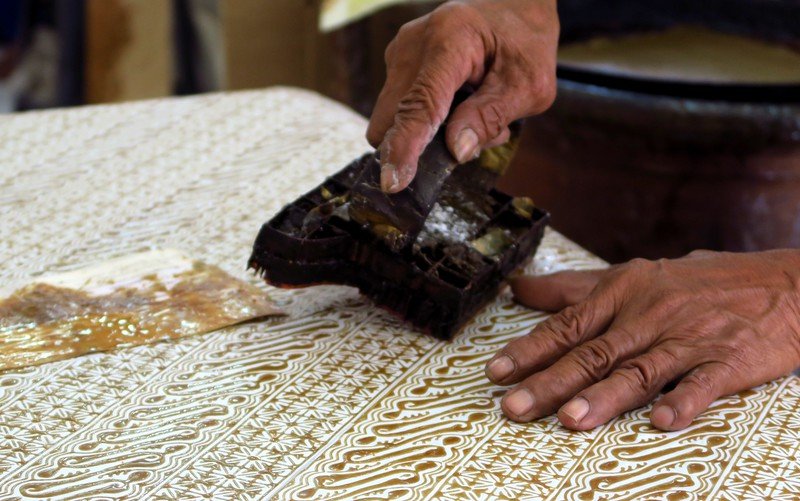
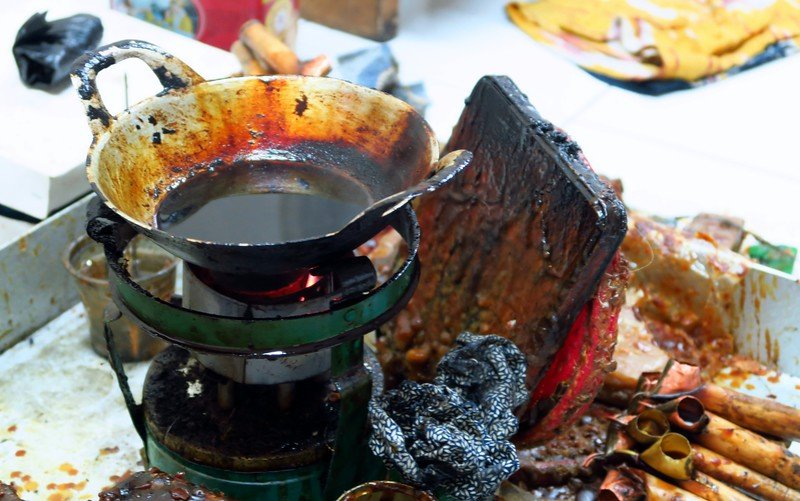
Learn the art of batik and shop for your own
Batik is a technique were wax is added to textiles and then dyed to create elaborate patterns. Many of the patterns are symbolic and associated with certain rituals, and these can either be added by hand or using a stamp.
Indonesian batik is considered a Masterpiece of Oral and Intangible Heritage of Humanity by UNESCO, so this is something that we wanted to see first hand while in Java. In order to do so, we made our way to the House of Danar Hadi, a private museum in Solo that contains around 10,000 pieces of rare and historical batik from all over Indonesia. And because it would be impossible to exhibit this many pieces at once, every 6 months they change their displays for visitors.
Aside from the artifacts inside the museum, the most fascinating part for me was seeing the making of the batik in the workshop. Here I watched as women blew on tiny pipes to keep the wax warm and then drew patters on the fabric. There were a total of 4 women working in the first workshop and the most experienced of them had 37 years of practice under her belt. I learned that applying the wax by hand to one piece of cloth can take up to 2 weeks, and a total of 3 months until the dyeing and sewing process is complete. Now would you believe all of this work is to create just 1 shirt?
From there, we moved onto the second workshop where we saw the wax being applied with an iron stamp. Using a stamp is more time efficient, so the pieces are finished sooner and are more affordable, so this is something to take into consideration if you’re in the market for a batik.
After visiting the workshops, we browsed the shop inside the House of Danar Hadi, where they had a massive selection. Sam ended up walking away with a red batik that everyone kept complimenting for the rest of our time in Indonesia.
As a note, all visits to the House of Danar Hadi are guided, and no video or photography is allowed in the museum, though you can pull out your camera in the workshops.
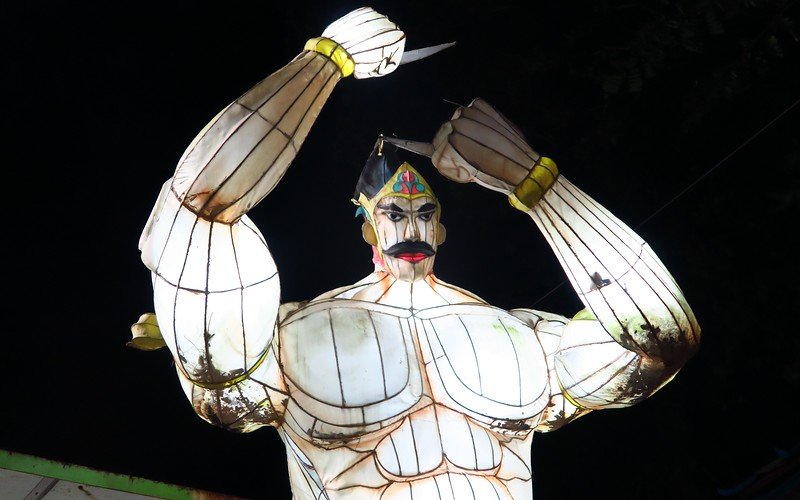
Fun and games at Sriwedari Park
So we originally came to Sriwedari Park because we heard this was the place to catch a shadow puppet performance (wayang kulit), which is an important part of the art heritage in Solo. However, what we didn’t realize is that the schedule changes throughout the week. On the particular night we visited they had an Indonesian rock band playing, which wasn’t what we came for, but it still turned out to be a lot of fun. There’s little to no information online about these performances and no one at our hotel seemed to know the schedule either, so you may have to chance it and see what’s on when you visit.
But there’s more to Sriwedari Park than just that! This place is actually a small amusement park, so aside from enjoying whatever performance they have on any particular night of the week, you can also buy tokens to go on the rides. Sam and I were all about the bumper cars, but they had other carnival games and rides to choose from.
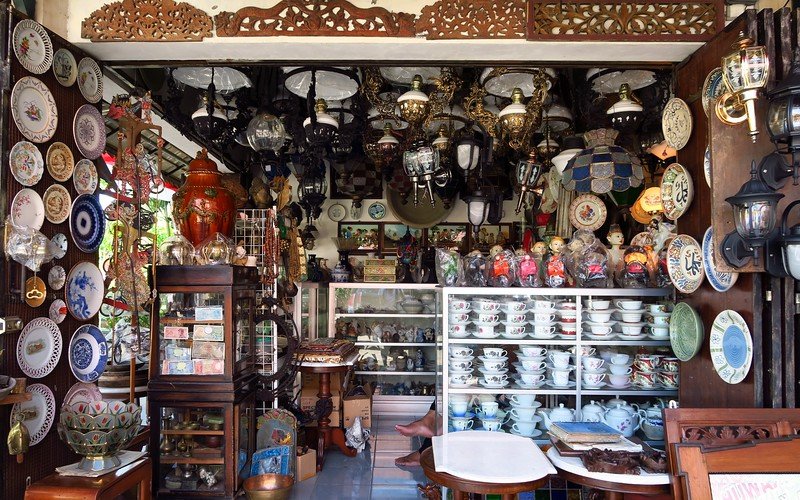
Shop for antiques at Triwindu Market
Another highlight of our visit to Solo was getting to visit the Triwindu Market, which is the place to be if you’re a collector of antiques.
The market is spread out across a series of two-story buildings and inside you’ll find everything from wrought-iron chandeliers and leather puppets, to old phonographs and Dutch porcelain. It’s a bit of a maze with tables full of knick-knacks spilling out of the shops, and a mix of lamps, lanterns and masks dangling from the ceiling, but it’s the kind of place where you could easily lose hours just snooping around.
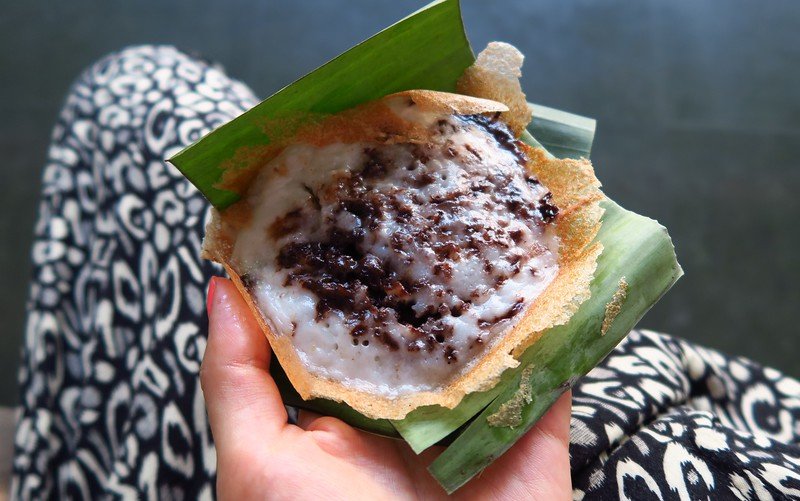
Feast on chocolate coconut pancakes
And now let me tell you about the most delicious pancakes I’ve had in my life!
Serabi is a pancake that is made from rice flour and either coconut milk or shredded coconut and it can be found across Asia, however, if there’s one recipe to rule them all, it may very well be the one from Serabi Solo Notosuman.
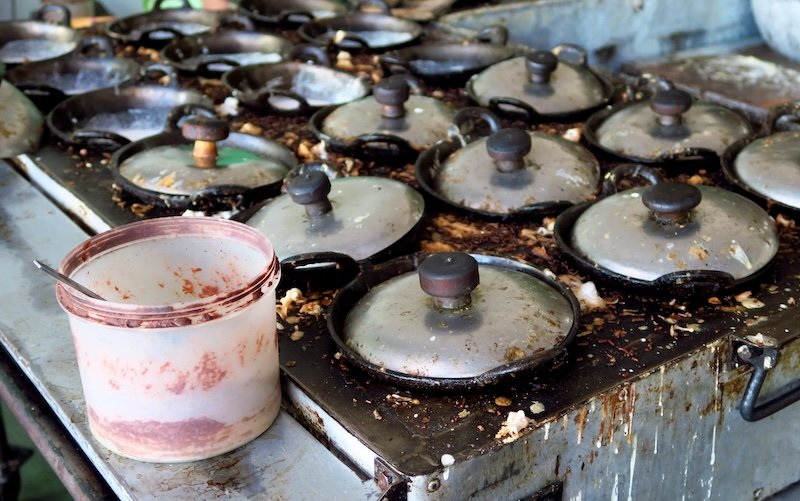
We arrived mid-morning craving a snack, and we ended up sampling the fluffiest, milkiest, sweetest, coconut pancakes with chocolate sprinkles on top. It was nothing short of magical, and it was so good that we had to go back and order more. The pancakes are a little crispy on the exterior with a moist interior, and they are served on banana leaves so they’re easy to handle.
You need to track this place down, even if it’s the only thing you do in Solo!
Semarang (2 Days)
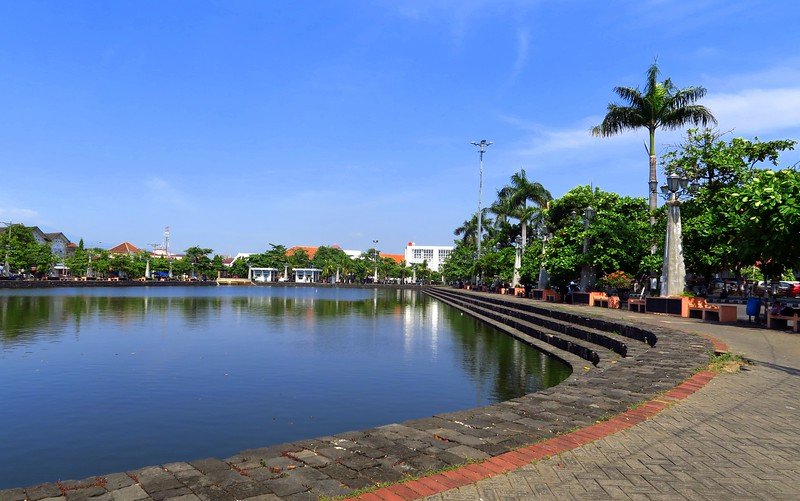
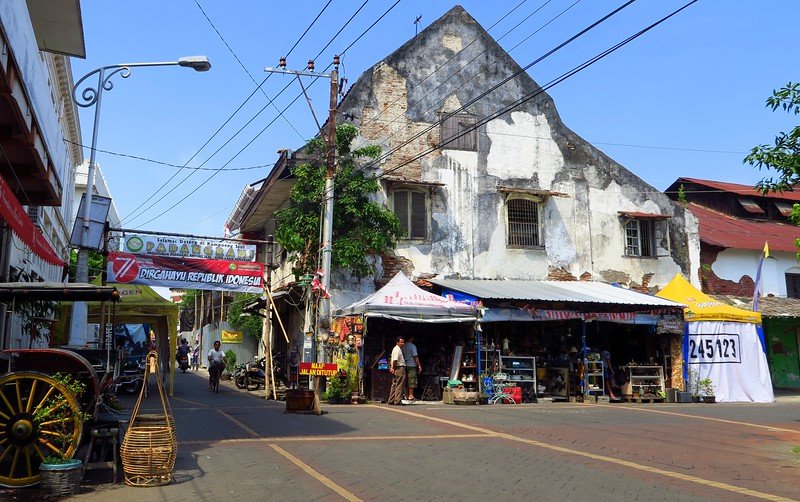
Explore the Dutch Quarter on foot
Kota Lama is the name given to the Old Dutch Quarter in the north end of the city. Though the wall that demarcated the “walled city” is no longer there, many of the buildings from the Dutch colony still remain. The area itself is a bit run down and it could use a little bit of TLC, but according to this article from the Jakarta Post published earlier this year, the municipality has plans to restore many of the historical buildings in this area. In the meantime, you can browse some of the little antique shops or enjoy a walk along the waterfront.
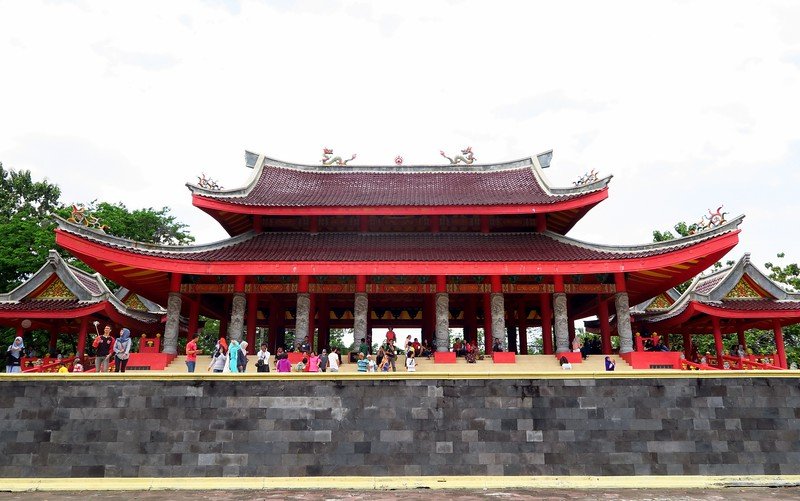
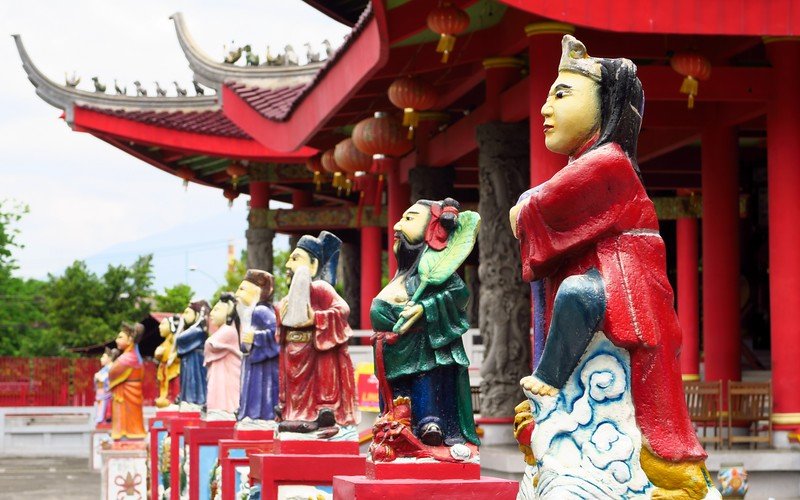
Visit Sam Poo Kong Temple
Sam Poo Kong is the oldest Chinese temple in Semarang and it was originally established by Zheng He, a Chinese Muslim explorer. The year of the temple’s foundation is disputed, but story has it that Admiral Zheng’s expedition stopped here after one of his lieutenants became ill. Together, the crew found a cave to use for shelter and prayer, and people later built a temple on this very site to commemorate the Admiral.
Devour the famed Semarang spring rolls
Last but not least, there is one specialty you should try in this city: Lumpia Semarang! These are spring rolls filled with bamboo shoots, dry shrimp and chicken or prawns. The dish originated in the Chinese community but these days it can be found on just about every street corner. We found a little road side stand and sampled some there. The spring rolls are served with a sweet chilli sauce that’s sweetened with coconut and thickened with tapioca flour.
Central Java & Yogyakarta Planner: More Trip Ideas and Tips
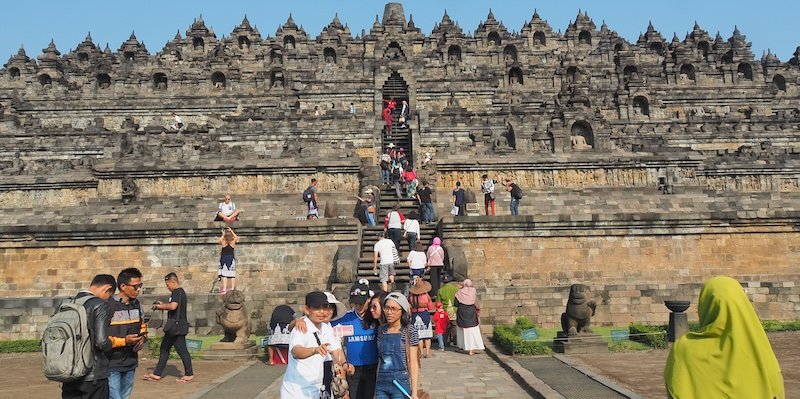
One-Week Loop at a Glance
| Day | Base / Overnight | Morning | Midday | Afternoon | Evening | Little Bonus |
|---|---|---|---|---|---|---|
| 1 | Yogyakarta (Kraton / Prawirotaman) | Arrive → gentle walk in Malioboro for first snacks | Kraton (Sultan’s Palace): guided halls + mini performances | Taman Sari Water Castle → kampung murals | Alun-Alun Kidul pedaled neon cars or riverside café | Try wedang ronde (ginger broth) before bed |
| 2 | Yogyakarta | Prambanan Plain temples: Prambanan when gates open | Sewu & Plaosan twins (5–10 min hops) | Ratu Boko hilltop complex | Ramayana Ballet (book seats behind the orchestra) | Sunset silhouettes at Boko’s stone gates |
| 3 | Yogyakarta | Transfer to Borobudur (sunrise if clear forecast) | Climb galleries clockwise; hunt your favorite relief | Rural brunch & village bike (optional) | Return via Punthuk Setumbu viewpoint if you skipped sunrise | Spa foot scrub + night market nibble crawl |
| 4 | Yogyakarta | Choose-Your-Adventure: Merapi jeep loop or Jomblang Cave | If Merapi: museum house + Alien Rock; If Jomblang: light-beam rappel | Gunungkidul coast add-on (Timang gondola) or café + gallery time in town | Casual angkringan (sit-low stall) dinner | Pack for tomorrow’s move |
| 5 | Solo / Surakarta | Train to Solo (40–60 min) → House of Danar Hadi (batik museum) | Kampung Batik Laweyan: mini wax-pen class | Triwindu Antiques market treasure hunt | Sriwedari Park show night (wayang/music rotates) | Dessert: hot serabi Notosuman (choc coconut) |
| 6 | Wonosobo / Semarang | Early drive to Dieng Plateau | Kawah Sikidang + Color Lakes | Sikunir viewpoint (if overnighted) or village stroll | Continue to Semarang (or stay Wonosobo) | Evening lumpia tasting in Kota Lama |
| 7 | Semarang | Kota Lama photo walk + coffee in a warehouse café | Sam Poo Kong temple complex | Optional Ambarawa Railway Museum (heritage ride days) | Fly/train onward | Buy bakpia boxes for the journey |
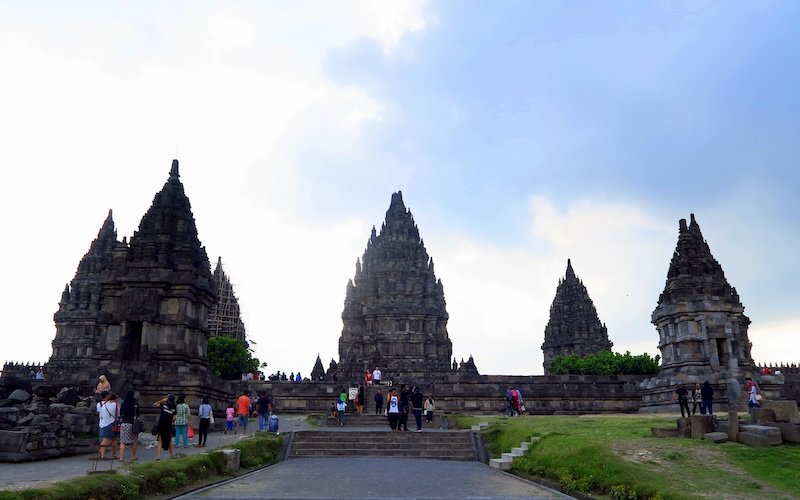
Prambanan Plain: Temple Tetris
| Cluster | Time Needed | From Central Jogja | Tickets & Notes | Best Light | Pro Tip |
|---|---|---|---|---|---|
| Prambanan (Hindu) | 1.5–2 hrs | 17 km / 40–60 min | Big-site ticket; museum inside | Early morning or golden hour | Walk the outer path first to frame photos without crowds |
| Sewu (Buddhist) | 45–60 min | Inside same archaeological park | Included with Prambanan park access | Mid-morning side light | The guardian dvarapala statues are moody portrait backdrops |
| Plaosan (Buddhist, twin) | 45–60 min | 3–4 km from Prambanan | Small local ticket; quiet | Late afternoon | Bring a light scarf—wind can be strong across the plain |
| Ratu Boko (hilltop palace) | 60–90 min | 3–5 km | Separate ticket | Sunset | Stay after official sunset—staff often allow a few extra minutes for glow |
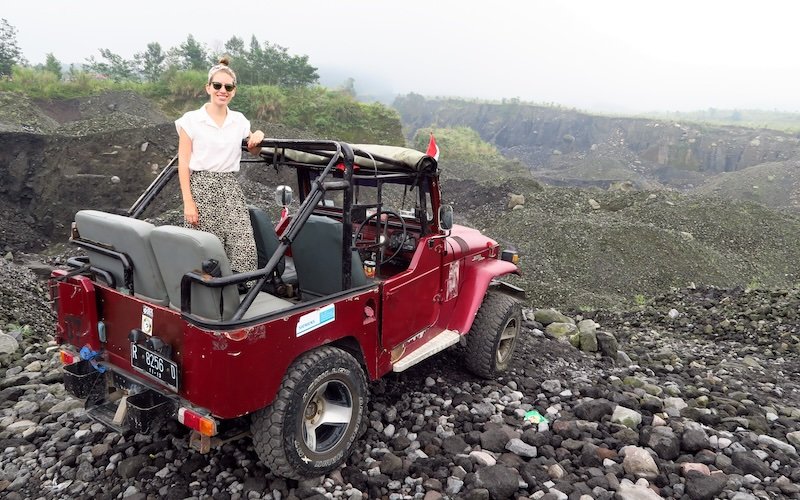
Volcanos & Caves: Pick Your Thrill
| Experience | Duration | Fitness | Bring | Good to Know |
|---|---|---|---|---|
| Merapi Jeep Loop | 1.5–2 hrs on-mountain (plus transfer) | Easy | Buff/hat, sunglasses, small cash for stops | Routes vary by activity status; expect dust and bumps (fun ones) |
| Merapi Sunrise Hike (local viewpoint) | 3–5 hrs round trip | Moderate | Headlamp, layers, trail shoes | Only with local guidance; plans change with alerts |
| Jomblang Cave (rappel) | ~4–5 hrs door-to-door | Moderate (mud, ladders) | Closed shoes you don’t love, socks, change of clothes | Aim to be inside ~11:00–12:30 for the light column; slots limited |
| Timang Beach Gondola | 1–2 hrs on site | Easy (but nerve-tingly) | Dry bag, quick-dry wear | Salt spray is real; there’s also a footbridge alternative |
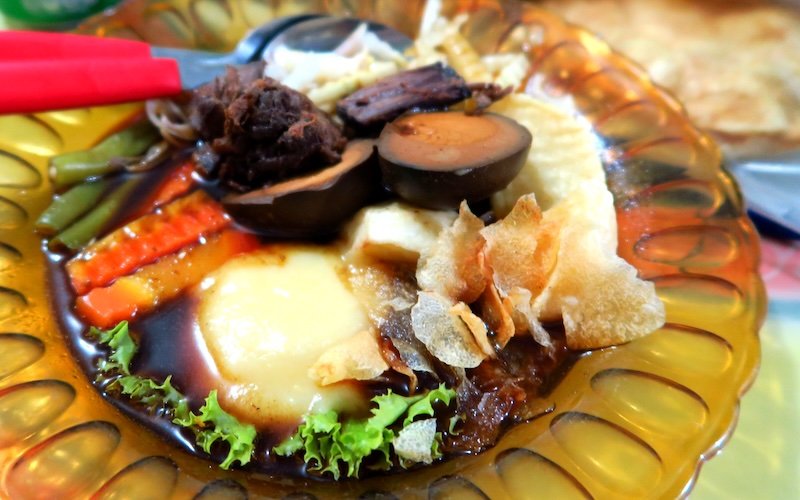
Eat the Region: Bite-Sized Crawl Map
| City/Area | Must-Try Dish | Where (type) | Why It’s Great | Backup Snack |
|---|---|---|---|---|
| Yogyakarta – Kraton/Prawirotaman | Gudeg (sweet jackfruit set) | Heritage warung | Iconic Jogja comfort plate; sweet/savory play | Bakpia (Pathuk) warm from the oven |
| Yogyakarta – Bantul | Sate Klathak (lamb on iron skewers) | Roadside grills | Char + juicy; minimal spice lets meat sing | Es dawet (iced coconut jelly) |
| Solo | Serabi Notosuman | Signature shop | Crisp rim, custardy center, choc sprinkles | Timlo Solo soup |
| Semarang – Kota Lama | Lumpia Semarang | Classic stalls | Bamboo shoot + shrimp/chicken, sticky chili sauce | Wingko Babat coconut cakes |
Street-smart: Join the busiest line, ask for fresh off the grill, and go sambal light on day one.
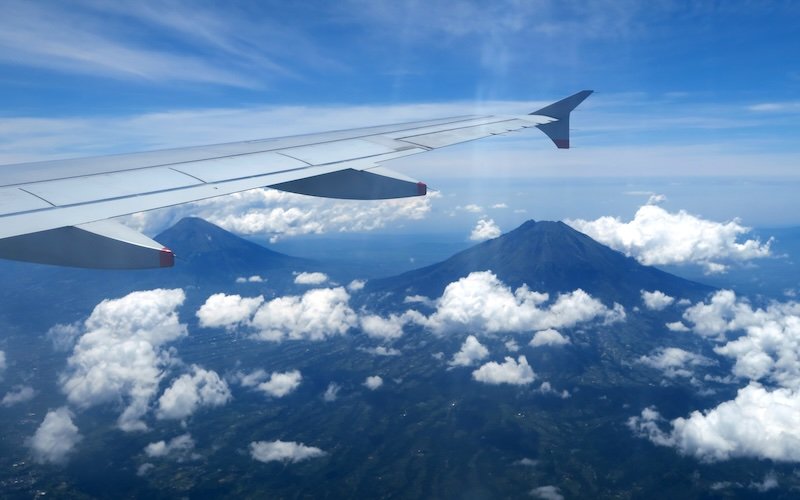
Getting Around (Cheat Sheet)
| Route | Best Mode | Typical Time | Notes |
|---|---|---|---|
| Yogyakarta ↔ Prambanan | Grab/Gojek or rental car | 40–60 min | Combine with Sewu/Plaosan; go early |
| Yogyakarta ↔ Borobudur | Private car/driver | 60–90 min | Pre-dawn if doing sunrise; check forecast |
| Yogyakarta ↔ Merapi Base | Car/driver | 60–90 min | Jeep operators are clustered; choose loop length on site |
| Yogyakarta ↔ Solo | Commuter train | 40–60 min | Frequent, comfy, cheap; stations central |
| Solo ↔ Semarang | Intercity train or car | 2–3 hrs | Trains avoid traffic; lovely paddy views |
| Semarang Airport (SRG) ↔ Kota Lama | Grab/Taxi | 25–45 min | Traffic spikes at rush; add buffer |
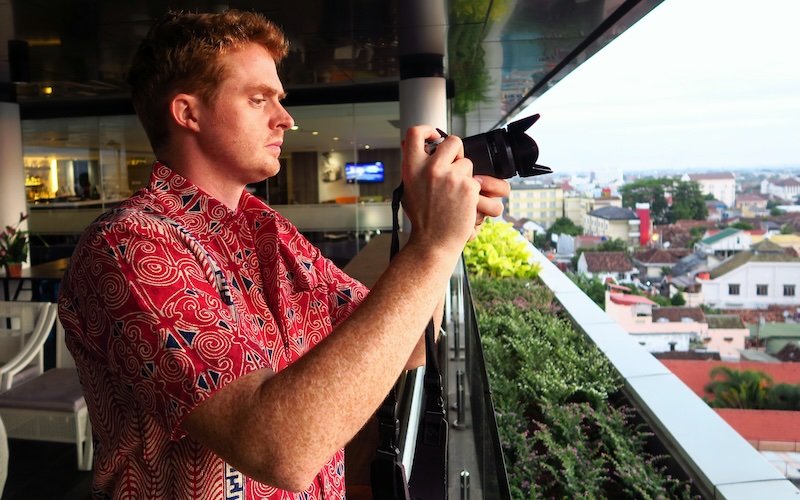
When to Go (Weather & Crowds)
| Season | Temps & Sky | Pros | Cons | Plan Moves |
|---|---|---|---|---|
| Dry (Apr–Oct) | Warm days, clearer mornings; cool highlands | Better sunrise odds, easier road days | Popular periods (Jun–Aug) | Book Ramayana & Borobudur slots early; pack a light layer for Dieng nights |
| Wet (Nov–Mar) | Afternoon showers; lush landscapes | Fewer crowds, dramatic clouds | Cave light beam less reliable; road spray | Front-load outdoor mornings; keep a poncho & dry bag in your daypack |
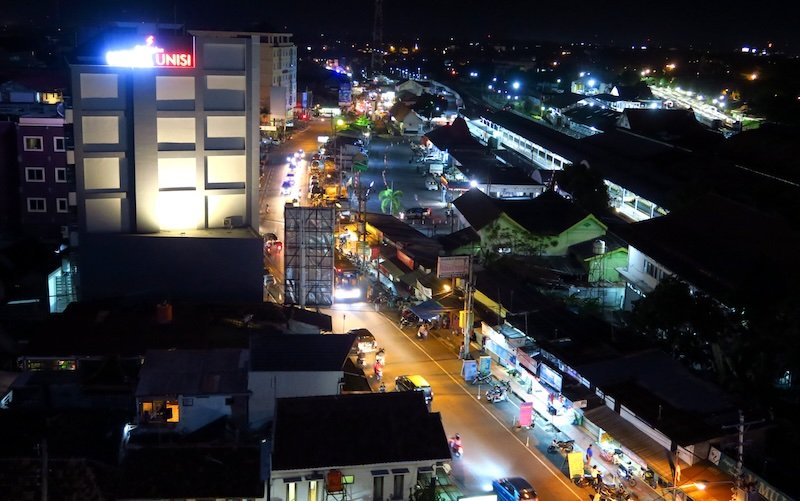
Budget Snapshot (per person, rough)
| Item | Shoestring | Mid-Range | Notes |
|---|---|---|---|
| Lodging (dbl/twin) | $10–20 | $35–80 | Homestays vs boutiques/heritage hotels |
| Meals (day) | $6–12 | $12–25 | Street eats vs cafés/restaurants |
| Local Transport (day) | $3–10 | $8–20 | Ride-hail/trains vs private car share |
| Big Tickets (per site) | $2–5 small sites | $20–35 majors | Borobudur/Prambanan are the priciest |
| Day Driver (car) | — | $45–70 per car | Split 2–4 ways; fuel typically included |
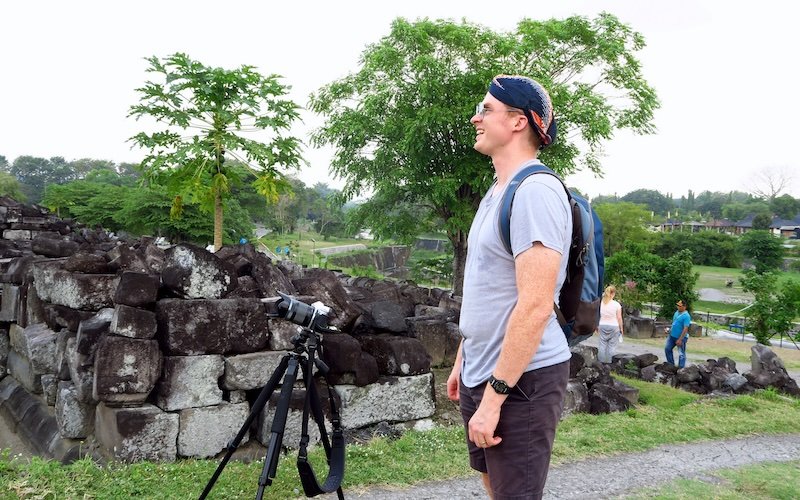
What to Pack (By Activity)
| Activity | Wear | Pack Extras |
|---|---|---|
| Temples & Old Quarters | Breathable tops, knees/shoulders covered, comfy sandals/sneakers | Light scarf, hat, refillable bottle, hand fan |
| Merapi (jeep/hike) | Quick-dry tee, long bottoms, trail shoes | Buff for dust, sunglasses, light jacket, wet wipes |
| Jomblang Cave | Old tee + long socks, closed shoes | Spare clothes, small towel, dry bag for phone |
| Dieng Plateau | Layer: tee + fleece + wind shell, jeans/trek pants | Beanie/buff, thin gloves, thermos for hot tea |
| Show Nights (Ramayana/Sriwedari) | Casual-smart (breezy dress/shirt) | Light layer for outdoor seating, mozzie repellent |
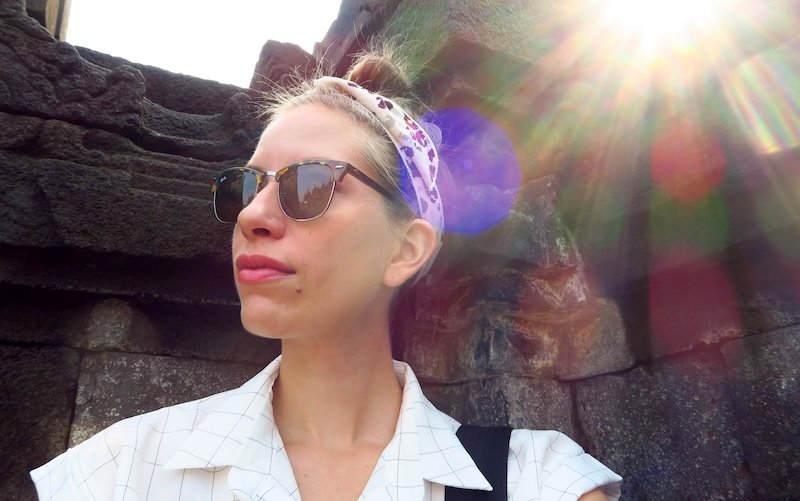
Culture & Etiquette (Tiny Habits, Big Respect)
- Dress modestly at sacred sites; rental sarongs exist but bringing a scarf helps.
- Right hand (or both hands) to pass or receive items.
- Ask before photos of people, offerings, and inside temple halls.
- Bargain kindly at markets—smiles work better than hard lines.
- Touts & “today-only batik shows”: Some are fine; if you prefer no pressure, shop in Laweyan/Kauman or museum stores.
- Trash & trails: Pack out tissues and plastics (especially around Merapi & beaches).
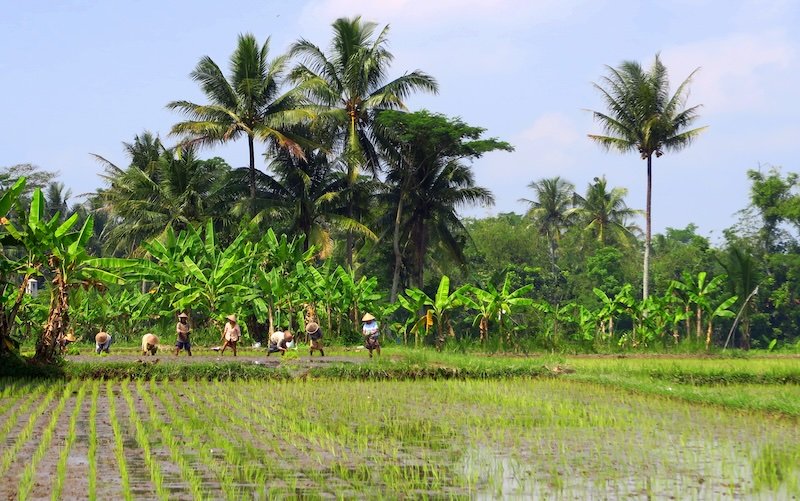
FAQ: Yogyakarta & Central Java (Trip-Planning Essentials)
1) How many days do I need?
If you’re only doing Yogyakarta city plus one temple day, 3 days works. For a fuller loop (Prambanan plain, Borobudur, Merapi or Jomblang, plus a hop to Solo and Semarang), plan 6–7 days. Add Dieng Plateau or Karimunjawa and you’re at 8–10 days.
2) When’s the best time to visit?
The dry season (Apr–Oct) brings clearer mornings and easier road days—ideal for sunrises and outdoor shows. Wet season (Nov–Mar) means greener landscapes and fewer crowds, but expect afternoon showers; front-load outdoor plans for the morning and keep a poncho in your daypack.
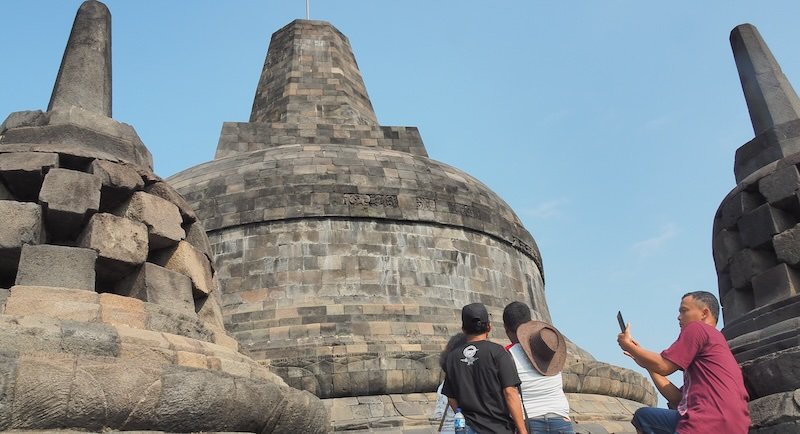
3) Is Borobudur sunrise worth it and how do I plan it?
Sunrise is magical when skies cooperate, but it’s weather-sensitive. Check the forecast the night before. If clouds look heavy, visit later in the morning and consider sunrise at Punthuk Setumbu (hill viewpoint) instead. Bring layers, a headlamp, and small cash for local parking/tea stalls.
4) What should I wear at temples and performances?
Keep shoulders and knees covered at sacred sites (carry a light scarf/sarong). Breathable fabrics and comfy shoes are best—there are stairs and uneven stone. For Ramayana Ballet, smart-casual is perfect; bring a light layer for outdoor seating and a small insect repellent.
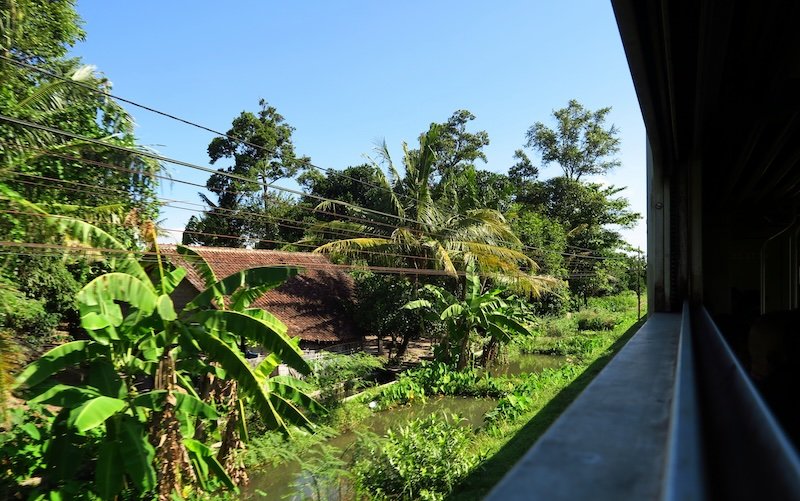
5) How do I get around—car, train, or ride-hailing?
Within Yogyakarta/Prambanan, Grab/Gojek or a private driver works well if you’re chaining multiple sites. Yogyakarta ↔ Solo is easiest by commuter train (40–60 min). Solo ↔ Semarang is best by intercity train (2–3 hrs) for scenery and to avoid traffic. For Merapi/Jomblang, a private car/driver is most efficient; tours handle logistics if you prefer.
6) How do tickets work for Borobudur & Prambanan?
Ticketing and access change from time to time. In the original post, there was a Borobudur ticket and a Borobudur–Prambanan combo; availability and pricing can vary. Bring photo ID, arrive early to avoid queues, and check the official on-site counters or park websites a day or two ahead for the latest rules, stair access, and time slots.
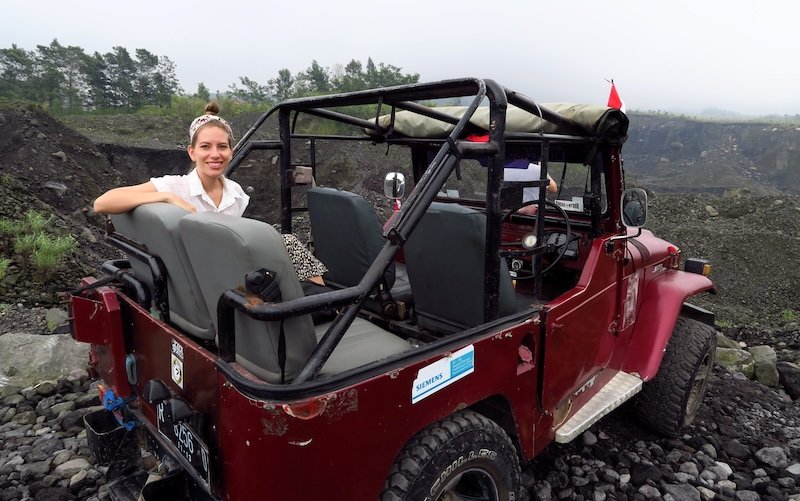
7) Merapi jeep vs. hiking—what’s better?
Jeep loops are fun, dusty, and easy—great if you’re short on time or traveling with mixed fitness levels, with stops at the museum house, Alien Rock, and viewpoints. Hikes offer sunrise ridgelines but require an early start, fitness, and local guidance; routes change with volcanic activity. In both cases, bring a buff/hat, sunglasses, and expect conditions to change—guides know current safety limits.
8) Is Jomblang Cave safe and do I need to book?
Operators manage safety with harnesses and guides, but you must be comfortable with mud, ladders, and a controlled rappel. Daily slots are limited—reserve ahead, aim to be in the chamber late morning for the light beam, and wear closed shoes you don’t mind ruining. Pack spare clothes, a small towel, and a dry bag for your phone.
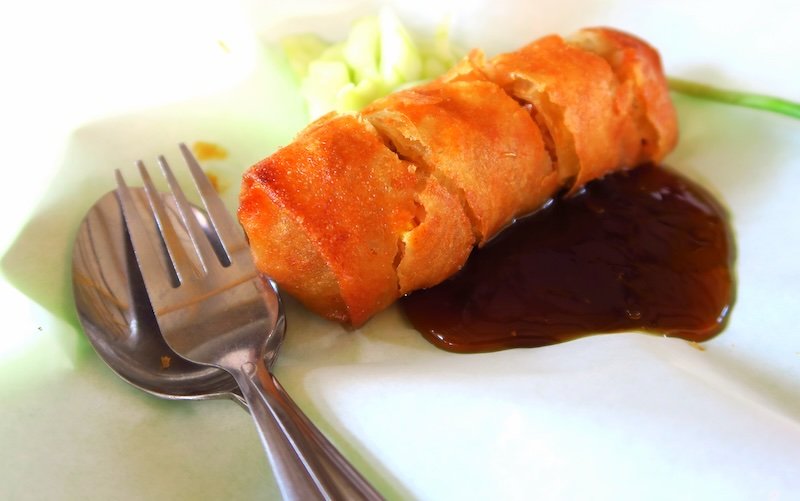
9) Foods to consider eating?
In Yogyakarta, try gudeg (sweet jackfruit set meal) and sate klathak (lamb skewers on iron rods), and snack on bakpia (Pathuk area). In Solo, don’t miss Serabi Notosuman (coconut pancakes—get the chocolate-topped ones). In Semarang, seek out Lumpia Semarang (bamboo shoot spring rolls) and wingko babat (coconut cakes). Join the busiest stall, ask for fresh off the grill, and go easy on sambal on day one.
10) Where should I base myself?
In Yogyakarta, stay near the Kraton for heritage sights or Prawirotaman for cafés and easy dining. In Solo/Surakarta, base along Jalan Slamet Riyadi (walkable to museums/parks). In Semarang, choose Kota Lama for photo-friendly façades and cafés or Simpang Lima for malls and parks. Pick walkable pockets to minimize traffic time.
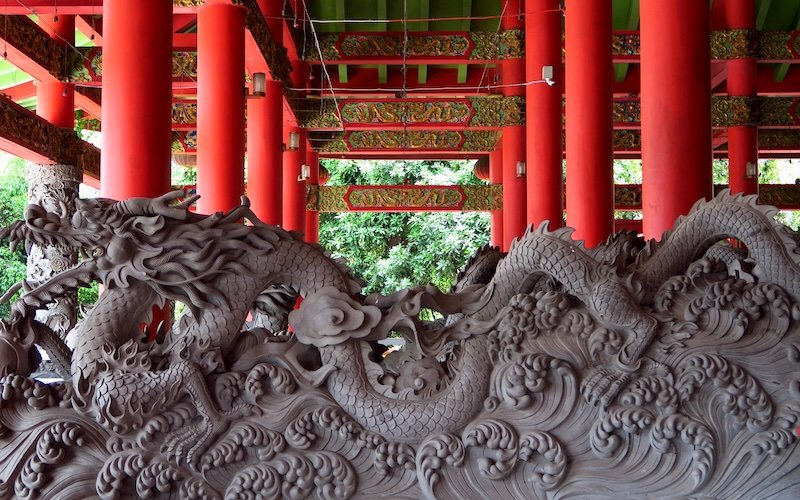
11) Are Solo and Semarang worth adding if I’m short on time?
Yes—Solo is batik heartland (House of Danar Hadi museum plus Laweyan workshops) and has fun evenings at Sriwedari Park. Semarang offers the Chinese-Javanese blend at Sam Poo Kong, atmospheric streets in Kota Lama, and its signature lumpia. If you can spare one night each, you’ll get a very different flavor than Jogja.
12) Any etiquette, money, and phone tips I should know?
Use your right hand to give/receive; ask before photographing people or prayers; bargain with a smile, and dress modestly in temples. ATMs are common in cities; keep small notes for parking, snacks, and village stops. Pick up a local SIM (Telkomsel/XL) at the airport or convenience stores; ride-hailing and maps will be your best friends. Tipping isn’t mandatory but is appreciated—round up bills, add 5–10% for great service, and tip guides/drivers based on time and effort.
And that’s just a quick taste of what the region has to offer. We only had a week there, so in a way I feel like we barely scratched the surface; seriously there is so much more to see and do in Yogyakarta and Central Java. We highlighted a few more activities in this video guide below, but if you have any other suggestions you’d like to share with travellers, feel free to do so in the comments below.
Have you been to Yogyakarta or Central Java?
What were some of your highlights?

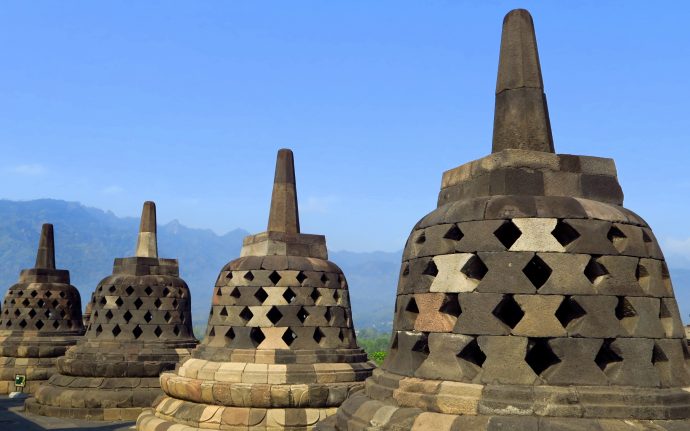
You were right! There’s a lot of things to see in Indonesia besides Bali. I love what you’ve shown here of the off-beaten tracks to visit in Central Java. These are places I’ve never even heard of!
I really enjoy reading your travel stories! Yogya is a place I love visiting, it has incredible heritage and is regarded as being one of the safest cities in Indonesia. Hope you enjoyed it. 🙂
Hi, audrey! Greetings from Jogja, the place where I was born and live in. 🙂
Indeed one week is not even enough to explore Jogja and Central Java… still many things to visit and enjoy!
Hi Audrey!
I know its very late to read your blog now, but this is amazing. Not only Bali, Indonesia also have jogja to be proud of for sure!
Hii Audrey, it is nice article from you. I hope you will visit again Yogyakarta Ctiy and stop in Jomblang Cave. Is is also on e of the best things to do while you are in Yogyakarta.